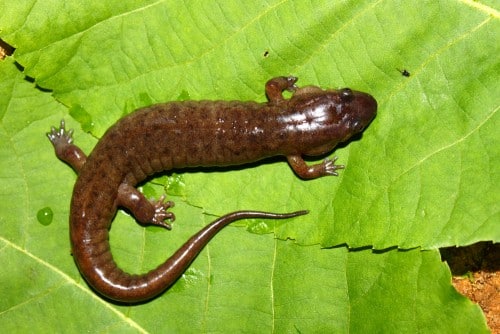The reason: the gene that was supposed to be expressed in the lungs is expressed in their skin * A second copy of a lung gene helps salamanders breathe through their skin

Adaptation: Gilat Simon
Almost all land animals need lungs to survive. The largest group in the world that is exceptional in this case is the family of lungless salamander species. Now, researchers understand how these amphibians manage to breathe through their skin instead of using lungs like the rest of us.
A copy of a key gene for the lungs translocated (changed) its place of expression to the skin, thus making the skin capable of efficient gas exchange.
The loss of the lungs represents a major evolutionary change, very significant. It is expected that a change of this magnitude will limit the size, lifestyle and location of any species that suffers such a loss. But the 448 species of the lungless salamander family called plethodontids probably haven't read this article, as they roam and spread, with great success, in the Western Hemisphere, South Korea and Italy. Their size ranges from 25 to 27 mm and they live in burrows and among trees in humid environments.
Disk salamanders are a relatively small but sturdy species with 14 grooves along the body. They have a knife-like tail that is half the length of the body. The upper part of the body is usually reddish brown, with dark markings on the sides of the body. The belly is whitish. They prefer a moist environment of trees, with a running water source nearby. They can usually be found under flat rocks or fallen tree trunks, near streams or in moist environments near water. In terms of heights - they can be found from sea level to the high Appalachian mountains. In very cold environments they burrow below the cold line.
Biologists involved in the study of developmental evolution followed the development of the embryo in one of these species, the dusky salamander. The researchers discovered that although the lungs begin to form in the fetus, they never reach full development. Instead, this species hypervascularizes the skin sheath.
Studies of genetic activity in this species and other vertebrates have revealed that there is a key gene in the vertebrate lung that exists in two copies in salamanders. The gene is only active in the lungs of salamanders with lungs, but in lungless species it is active in the skin, mouth and throat. The gene codes for a protein that helps the membranes to be more receptive (open) to gas exchange and its presence in the skin and mouth explains why in some species of salamanders there is no need for lungs at all.
The researchers suggest that the newly discovered surfactant protein may be useful in treating respiratory problems in humans.
Published in Science News: 8.1.16
To the page describing the feature on the University of Michigan website

One response
Pretty